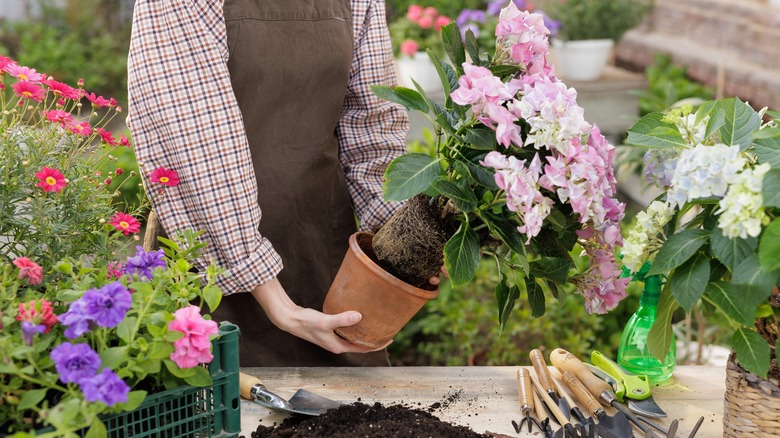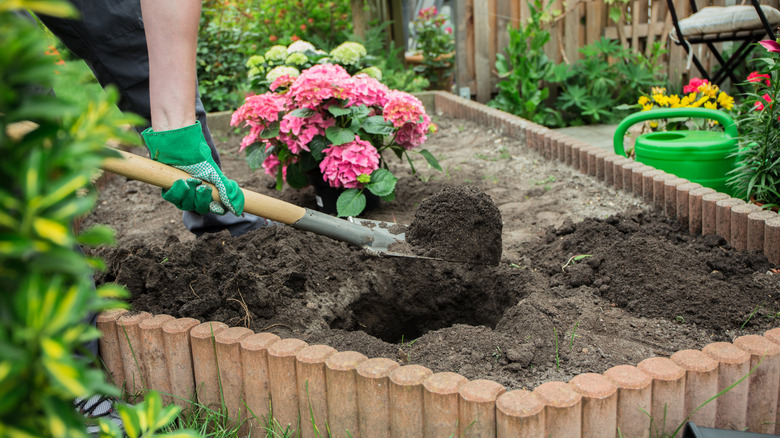Why The Fall Is A Great Time To Plant Hydrangeas For Successful Blooms
If more hydrangea blooms top your wishlist for spring, fall might be the perfect time to add more to your yard. Just be sure to get those hydrangeas in the ground before the arrival of the first frost, and you'll be ready to enjoy them for many seasons to come. These perennial shrubs are beloved by many for their big, oversized clumps of flowers in white, pink, blue, or purple.
Some types of hydrangea, like Hydrangea macrophylla or Hydrangea serrata species, can be sensitive to soil pH. You might even be able to magically change the color of these hydrangeas with a common kitchen scrap. Of course, color changing aside, the real benefit could be that hydrangeas thrive in a wide range of acidic, neutral, and alkaline soils, meaning you can plant them most anywhere. Famously versatile, hydrangeas also thrive in USDA Plant Hardiness zones 3 to 9.
Fall can be the perfect time to plant them because the soil will be cooler, and heat inhibits root growth. Hydrangeas' big, green leaves make it susceptible to the heat in general. Newly planted shrubs love fall weather because cooler temperatures give roots a chance to get a foothold in the soil before winter turns your yard into a frozen tundra. When picking your hydrangea, know there are several types, from more cold hardy to more shade tolerant. Do your research before you head to the nursery to pick out the best plant for your garden.
Do this when planting your hydrangeas in the fall for better blooms
You can buy ready-to-plant hydrangeas from your garden center or you can propagate a Hydrangea paniculata bush by snipping off bits of new growth. It's best to plant on a cooler fall day, or try for first thing in the morning or in the early evening. Heat will stress out a newly planted hydrangea. It's also important to dig a big enough hole, usually about a foot deep — or at least the same length as the roots of your shrub.
Pick a spot that's in the sun or partial shade, depending on the kind of hydrangea you're planting. Snip away any withered or dead roots, and unfurl tangled roots if the hydrangea appears potbound. Make sure you give each hydrangea plant plenty of room to grow, at minimum 3 feet apart. If you crowd your hydrangeas too closely together, you might be asking for common fungal infections like powdery mildew.
After planting, give that new hydrangea a healthy drink of water, and keep watering regularly because these flowering shrubs are notoriously thirsty plants. In fact, it's a good idea to make sure your young hydrangeas get lots of water for the next two years . Don't forget to add a nice layer of mulch, too, both for the new plants and any established hydrangeas in the yard. Hydrangeas need special care in fall, especially varieties that might not be as cold hardy.

